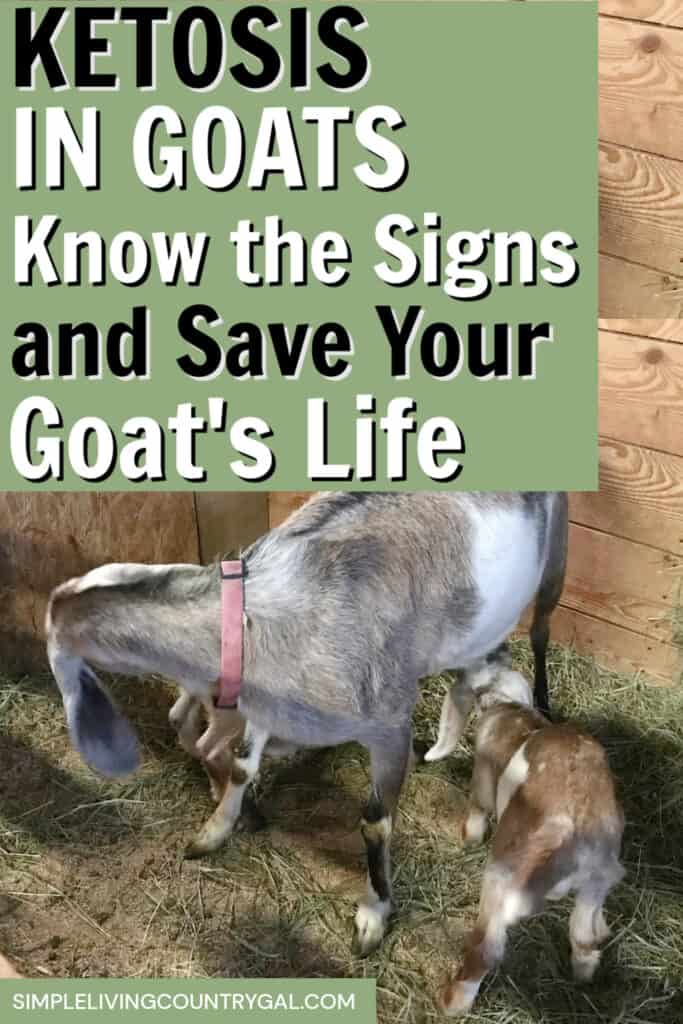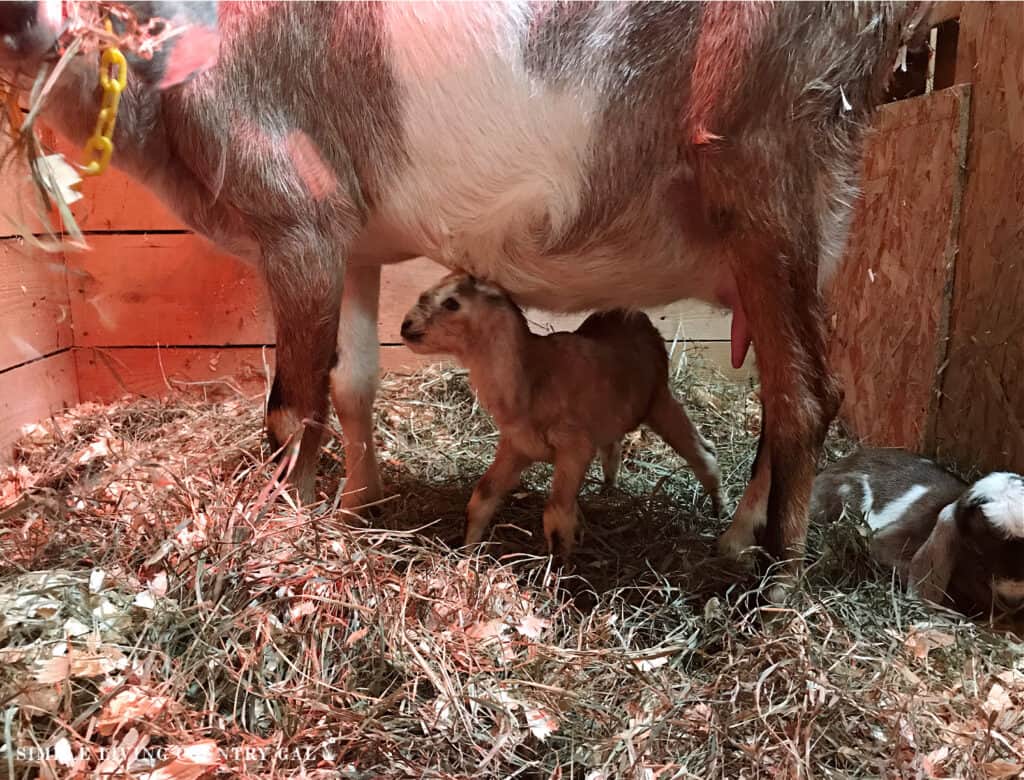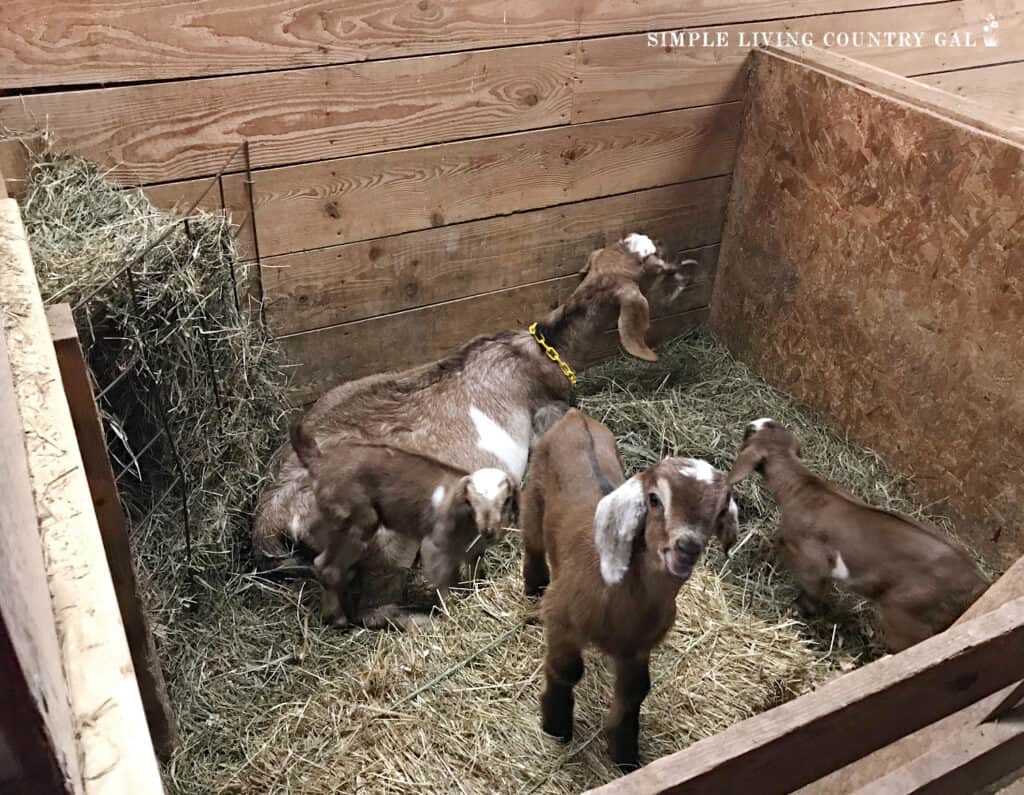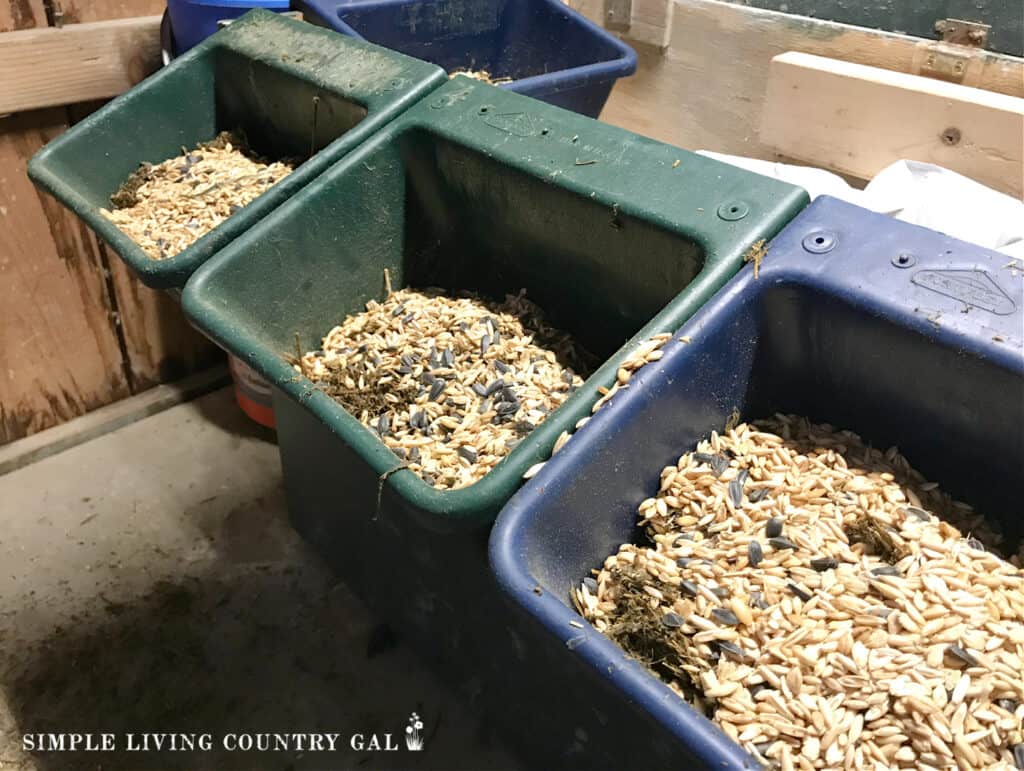ketosis in goats
This guide will help you to understand ketosis in goats, what causes it, how you can prevent it, and the best way to treat your doe if she has this condition. If you want the best milk, you want to ensure your goats are healthy from nose to udder, and we will cover the best approaches you can start using with your herd.
Use these tips on how to raise dairy goats that are good milkers by giving them the best feed and care.

Over the years, we have dealt with our share of health issues with our goat herd. From worm outbreaks to abscesses, I have seen and treated a collection of conditions.
With each new issue, my learning has grown, as well as my home library, until I now feel confident in my ability to identify most ailments early on. Early detection plays an important role in recovery and this is my best advice for raising any livestock, especially goats.
If you are new to raising dairy goats, be sure to check out our list of Goat Breeding and Goat Kidding articles for more guides and care tips.
What is ketosis in goats?
Ketosis in goats is a condition that happens later in pregnancy or early after kids are delivered. It is when the demands on the does body causes a build-up of excess ketones in the blood.
It tends to happen more in goats that are giving birth to multiples, where their bodies struggle to keep up with the demands of having more than one kid. Other terms for ketosis are pregnancy toxemia, lambing, or kidding sickness.
Don’t forget to grab the FREE Goat Health Checklist below!

What causes ketosis in goats?
There are a few reasons why one goat may be more susceptible than another, with diet being the most common. If your goats’ feed diet is low in carbohydrates and protein, it can lead to higher ketone levels.
In a goat’s pregnancy, most of the kids’ rapid growth happens at the end of gestation, requiring more energy from the doe. The same is true after birth when more energy is needed for lactation or the production of milk.
Stress can also contribute to ketosis, which is why I like to have separate birthing stalls for our does that are close to kidding. For easy tips, learn how to set up a kidding pen for your goats.
Finally, goats that have given birth to 2, 3, or more kids tend to have a higher risk of developing kidding disease.

Symptoms of Ketosis
There are a few symptoms to watch for and knowing them will help you to catch things before the progress.
• Lethargy: You may notice a big decrease in energy with your doe. She may be lying down more than usual and may refuse to get up or appear too week to move.
• Decreased Appetite: You may see little to no interest in food, which is a big warning sign that something is off with any goats. Not eating will only make your goat’s condition worse.
• Weight Loss: Catching a loss in weight can be tricky unless you are hands-on with your goats. Get into the habit of running your hands down their backs so you are familiar with their weight. This will help you to see any loss more easily.
• Sweet-Smelling Breath: This symptom can be tricky to catch, but when there is the presence of ketones, it can give a sweet odor to the goat’s breath.
• Unsteady Gait: If your goat is walking you may notice a lag or unsteady balance in her gait.
• Reduced Milk Production: In lactating goats, a drop in milk production is a common symptom and one that usually gives goat owners the first clue that something is off.
How to Test for Ketosis
There are several ways to test for ketosis, but the easiest is using test strips. I was taught this trick from our vet years ago, and it is the only way we test on our homestead. You can get Urine test strips online or at the pharmacy for people will work fine with your goats.
- Use a urine collector to catch a sample from your doe.
- Dip the test strip inside being sure to follow the instructions for timing.
- Compare the color change on the strip to the chart on the box to see the level of ketosis.
If you have a goat that has issues, you may want to test routinely to ensure she is staying within healthy limits.
Golden Barrel Unsulfured Black Strap molasses, 32 oz

Disclaimer: In accordance with FDA guidelines, the information and products offered on this website are not intended to diagnose, treat, cure, or prevent any disease. I am not a medical professional. Before administering any medications to your animals please contact a veterinarian first.
How to Treat
If you know your goat has a kidding disease, there are a few things you can do to help. Always seek the advice of a veterinarian when treating ketosis. They can provide tailored recommendations based on how bad it is as well as incorporating the needs of your goat.
• Increase Feed: Give more high-quality roughage, such as second-cut hay or Chaffhay, which is alfalfa, yeast, and enzymes.

• Supportive Care: Ensure that the goat remains hydrated and has access to fresh water at all times. If you have a sick pen, you will want to separate her from the herd to give her more hands on care.
• Molasses: Add black strap molasses to your goat’s water and feed to help increase calories. Goats love the taste of molasses, and this will encourage them to drink and eat.
• Vitamin B12 Injections: Give vitamin B12 by injection to help boost energy and encourage recovery. Consult with a veterinarian for appropriate dosing guidelines.
• Dextrose: The best treatment for ketosis is dextrose, but I would have a vet administer this as it needs to be done intravenously, and that can be tricky.
Dairy Goat Milking Guide+Bundle

How to Prevent Ketosis
There are a few things you can do to help maintain energy balance and reduce the risk of ketosis.
• Balanced Diet: Be sure your goats are getting a balanced diet with appropriate levels of carbohydrates, proteins, and fats. High-quality hay and a grain mix can help to support energy demands.
• Supplemental Feeding: During late gestation and early lactation, you can give them more grain if they are not overweight. To help increase their food consumption try adding black strap molasses to their water and/or grain. Goats love the taste of molasses and we use it often throughout our herd.
• Regular Monitoring: If you have a goat you suspect might have issues, you can begin routine testing of her levels, keeping records as you do. Goats you may want to target for testing are any that are too thin, overweight, or you know to be carrying multiples. If you see levels are starting to rise, you can adjust their feed accordingly.
Storey’s Guide to Raising Dairy Goats, 4th Edition: Breeds, Care, Dairying, Marketing

• Adequate Access to Feed: Ensure that all goats, especially weaker or less dominant animals, have adequate access to feed and water. This helps prevent stress-related ketosis that can happen if you have an aggressive herd that bullies during feed time.
• Avoid Sudden Dietary Changes: Be sure to make any changes in feed or diet gradually. This is good practice to have routinely and not just with pregnant does.
• Vitamin and Minerals: Provide necessary vitamins and free choice minerals, to help keep nutrients level.
• Reduce Stress: If you have the space, keep does who are close to kidding away from the main herd. This will help them to feel more comfortable and reduce stress levels.
Ketosis can be scary, but it doesn’t have to be. When you know what it is, how it occurs, and tips you can do to prevent it from happening, you will feel confident about your herd’s health.
Be sure to keep records of all your goats each kidding season so you can refer to them, allowing you to implement preventative measures early on. Bookmark this guide on ketosis in goats so you can refer to it each kidding season.









